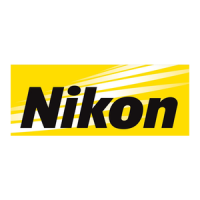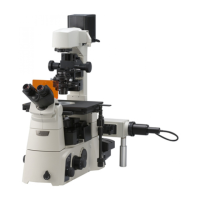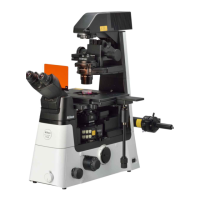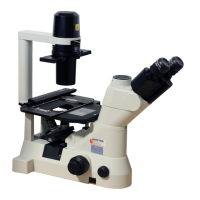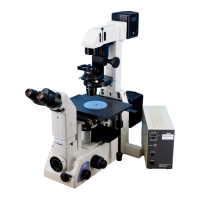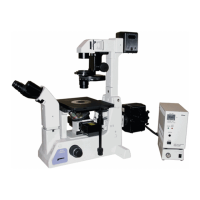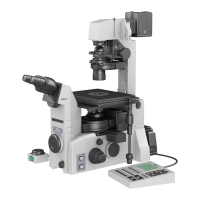Chapter 3 Operation
3.11 Objective Operation
76
Checking for air bubbles
(1) Objective pupil plane under observation
with Bertrand lens
(2) Field of view with focus of Bertrand lens
shifted from the above state
Figure 3-36 Air bubble observation with
Bertrand lens (example)
To check for air bubbles, observe the objective pupil
plane. The objective pupil plane can be observed by
rotating the Bertrand lens operation lever to position
“B” and adjusting the focus with the Bertrand lens
focusing knob, or by replacing an objective with a
centering telescope and adjusting the focus with its
eyepiece.
If you detect bubbles in the oil, attempt to remove
them by rotating the nosepiece slightly to move the
oil-immersed objective back and forth in the oil one
or two times. If the bubbles cannot be removed, wipe
off the oil, and reapply new oil.
Removing oil
After using an oil immersion objective, wipe the oil
off from its tip.
To remove the oil, gently wipe two or three times with
a lens tissue or gauze dampened with petroleum
benzine. It is recommended that you avoid using the
same area of the tissue or gauze repeatedly. After
wiping with petroleum benzine, wipe with absolute
alcohol (ethyl or methyl) for a better finish.
If petroleum benzine is unavailable, use methyl
alcohol. However, as methyl alcohol does not clean
as well as petroleum benzine, it will be necessary to
wipe a few more times. (Three to four wipes are
usually sufficient.)
When wiping oil off of the specimen, take care not
to damage the specimen.
Caution
• Residual oil on an oil-immersion objective or oil adhered to the tip of a dry-type objective
will degrade the image quality significantly. After use, thoroughly wipe off all oil, and make
sure that no oil adheres to the tips of other objectives.
• Absolute alcohol and petroleum benzene are highly flammable. Handle with care. Do not
use near an open flame, or operate a power switch in the vicinity.
Reapplying oil
When performing oil immersion repeatedly, use the
Escape and Refocus switches for faster focus
adjustment.
A ø25 mm or acrylic concentric ring is useful as it will
allow you to apply the oil via its oiling notch, without
needing to remove the specimen (i.e. Petri dish). Set
the concentric ring so that its notch matches the
rotational direction of the nosepiece, hold the
nosepiece so that the objective is aligned with the
notch, and apply the oil.
Light partially blocked
in upper section of
field of view.
ir bubble recognized
in upper section of
field of view.
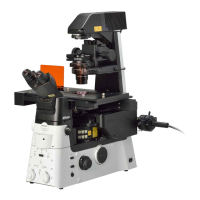
